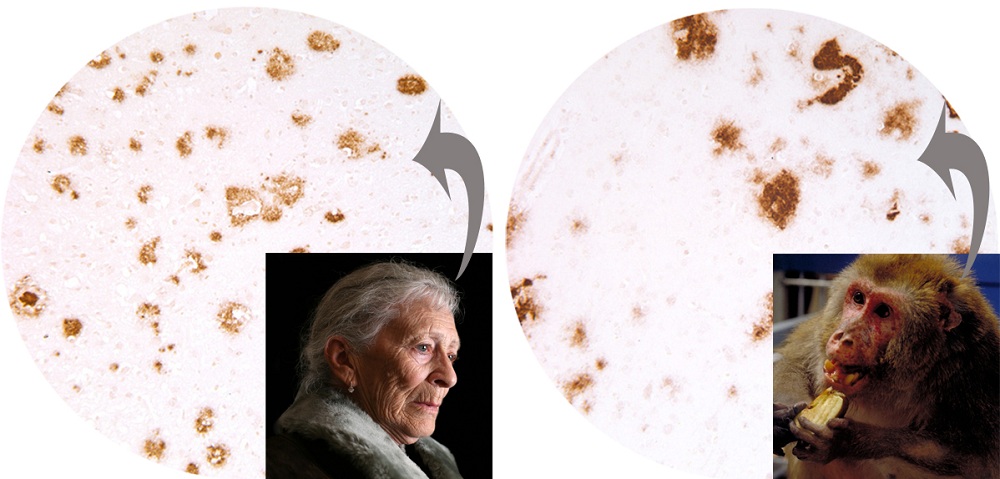Healthy Monkeys Brains May Hold Key to Curing Alzheimer's

This Research in Action article was provided to LiveScience in partnership with the National Science Foundation.
Under a microscope, plaques in the brains of very old monkeys can look remarkably similar to the plaques that clinicians use to diagnose Alzheimer's disease in humans. The catch: these monkeys don't have Alzheimer's.
Alzheimer's is caused by the buildup of a protein called Abeta in nerve cells in the brain, which leads to their death, severe memory loss and dementia. Monkeys and apes, our closest living relatives, make the same type of Abeta protein, which also accumulates with age in their brains.
Under a microscope, Abeta lesions in the brains of very old monkeys can look remarkably similar to the Abeta lesions that clinicians use to diagnose Alzheimer's disease in humans. Yet only humans get Alzheimer's disease. In fact, there is not a documented case of age-related dementia in any other species.
Alzheimer's susceptibility
The uniquely human susceptibility to Alzheimer's is unlikely due to our long lifespans, as apes and some monkeys can live 40 to 60 years. Some apes and monkeys can get other human aging diseases, like atherosclerosis (the thickening of blood vessels by cholesterol deposits) and diabetes.
Yet, the resistance of monkeys and apes to Alzheimer's disease presents an exciting opportunity for Alzheimer's researchers. We can study these animals to see what it is about their brains that prevent the Abeta protein from killing nerve cells.
Sign up for the Live Science daily newsletter now
Get the world’s most fascinating discoveries delivered straight to your inbox.
In Lary Walker's lab at the Yerkes National Primate Research Center in Atlanta, Ga., Rebecca Rosen, currently a AAAS Fellow at the National Science Foundation, looked at the brains of aged monkeys and apes and found many similarities to brains from Alzheimer's patients. The Abeta protein accumulated in similar amounts and in similar locations in all of these subjects' brains.
Monkey v. human
She found one exciting difference. She ran a set of experiments with a new chemical being used to diagnose Alzheimer's in living human patients. According to this study by Rosen and her colleagues, the chemical didn't stick to Abeta lesions in the brains of apes or monkeys. This means that Abeta proteins might be folding differently in nonhuman brains. Further, this chemical could be sticking to a type of Abeta that is only found in humans with Alzheimer's disease.
This "human-specific Abeta" might be a very specific target for a new drug to prevent humans from succumbing to the devastating disease. This and other studies, particularly in the fields of evolutionary medicine and genetics, show that we can make important discoveries about human disease conditions from looking at both differences and similarities to our closest living relatives.
Editor's Note: Any opinions, findings, and conclusions or recommendations expressed in this material are those of the author and do not necessarily reflect the views of the National Science Foundation. See the Research in Action archive.










